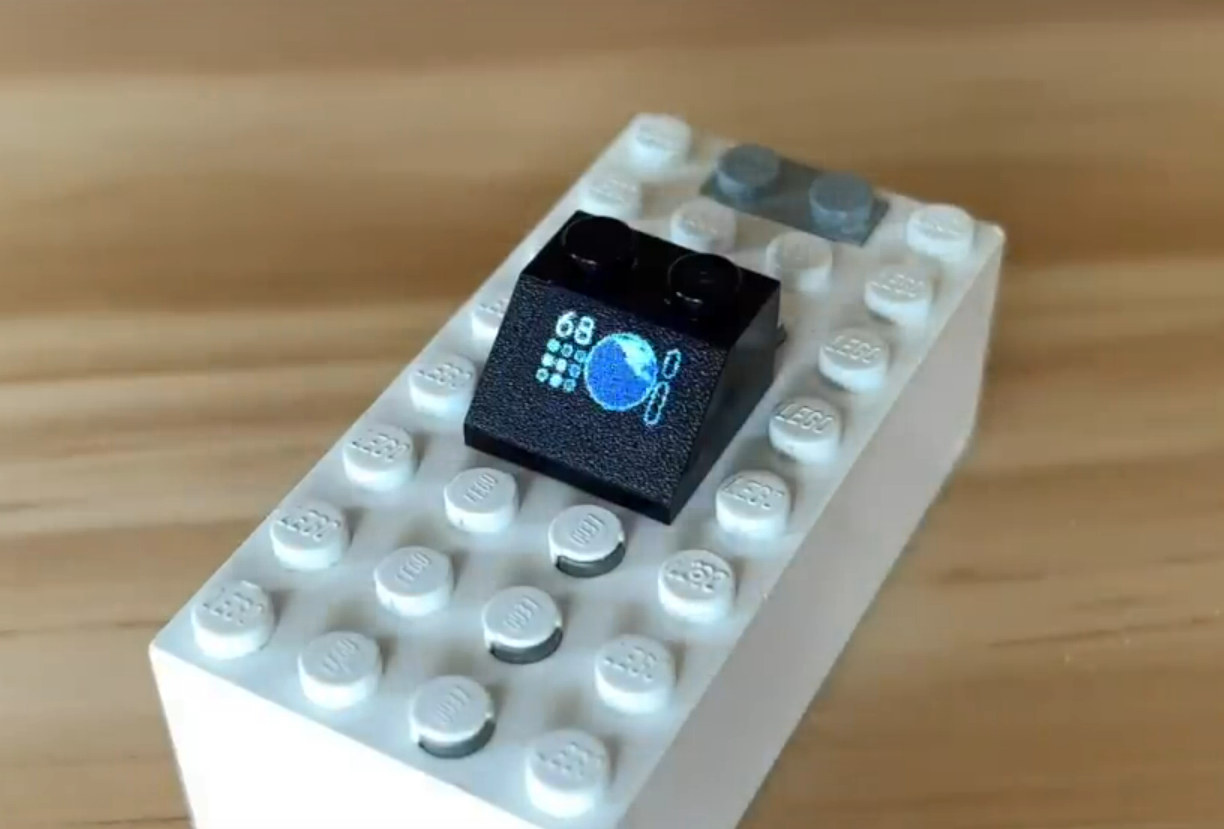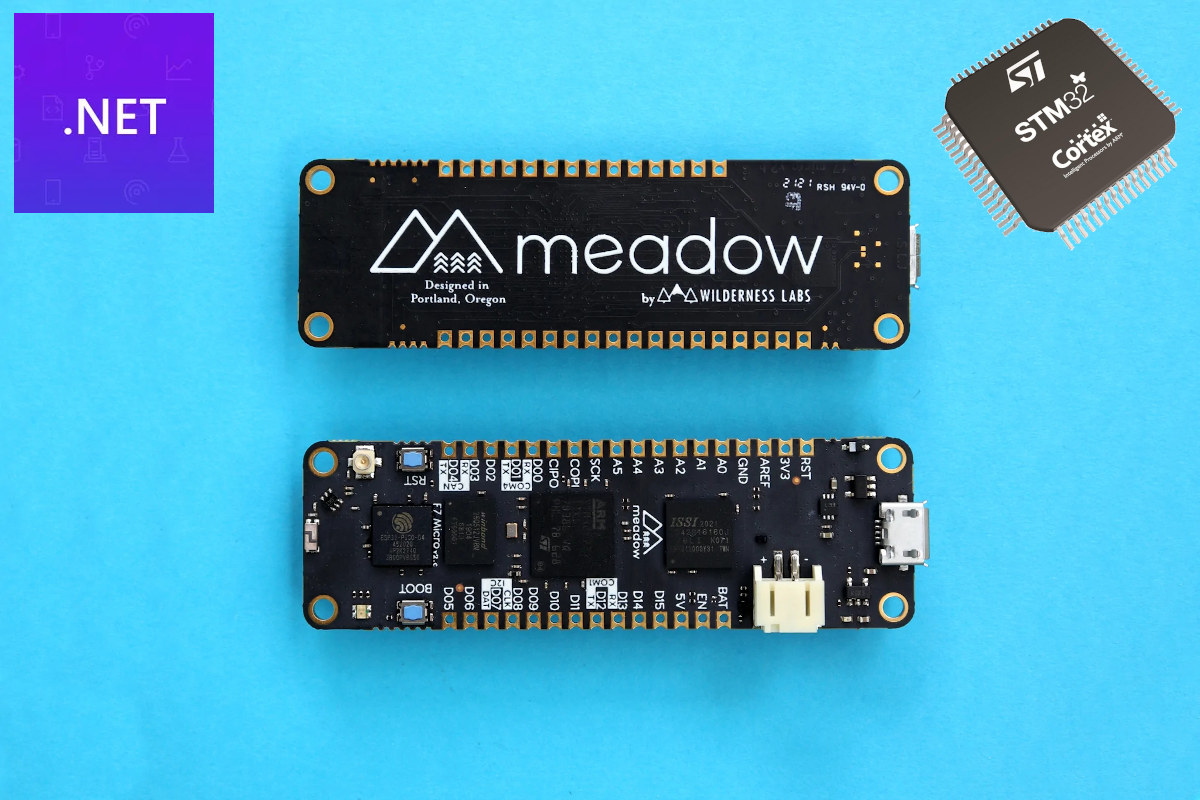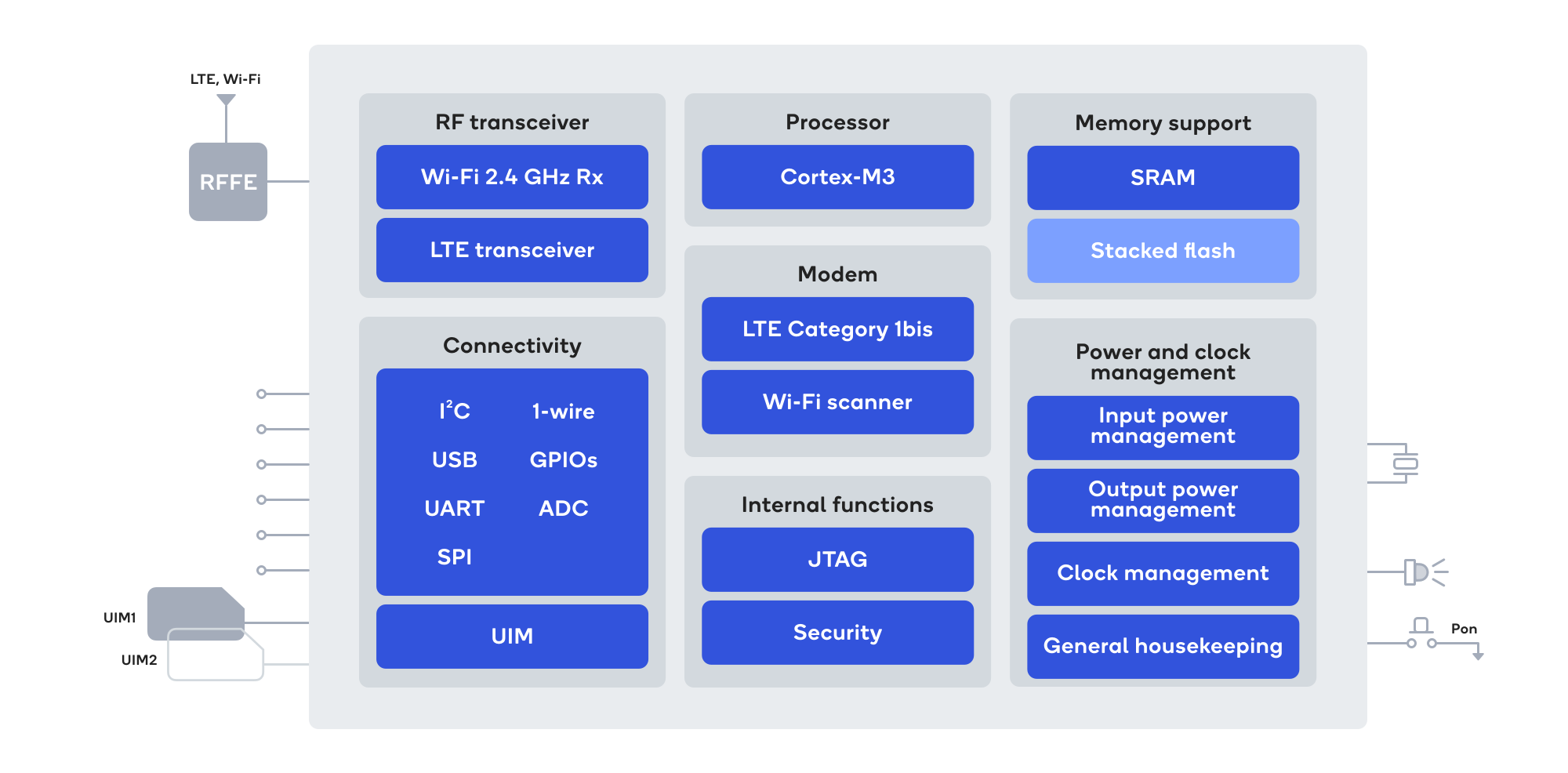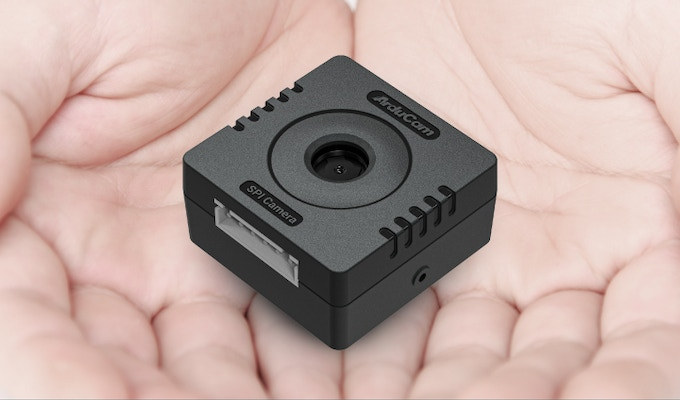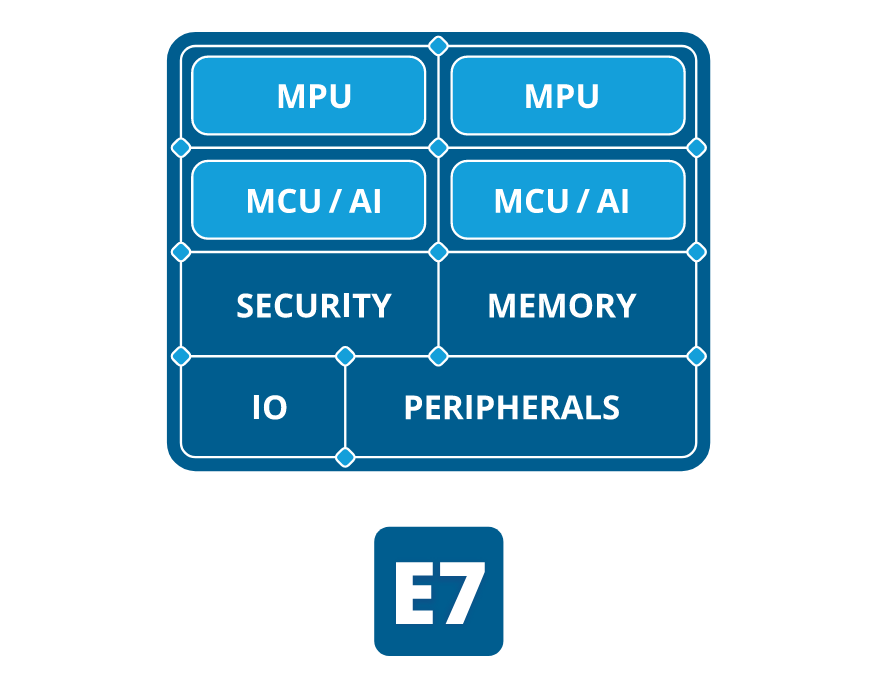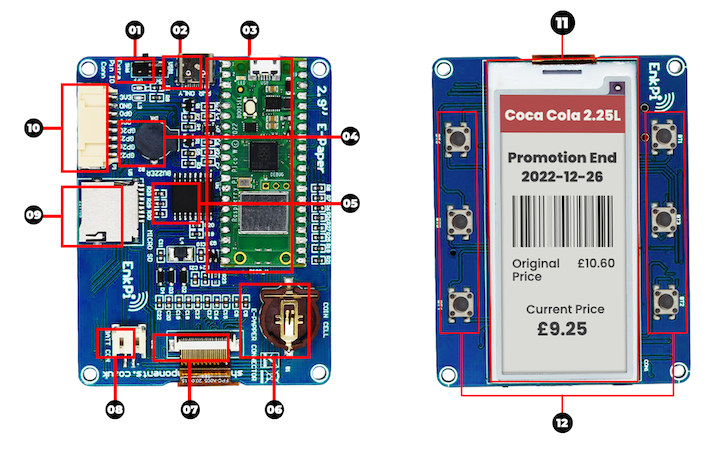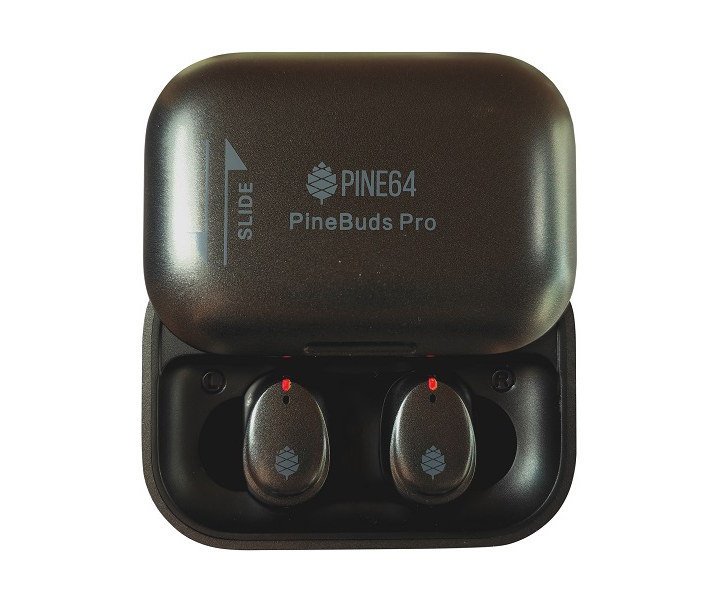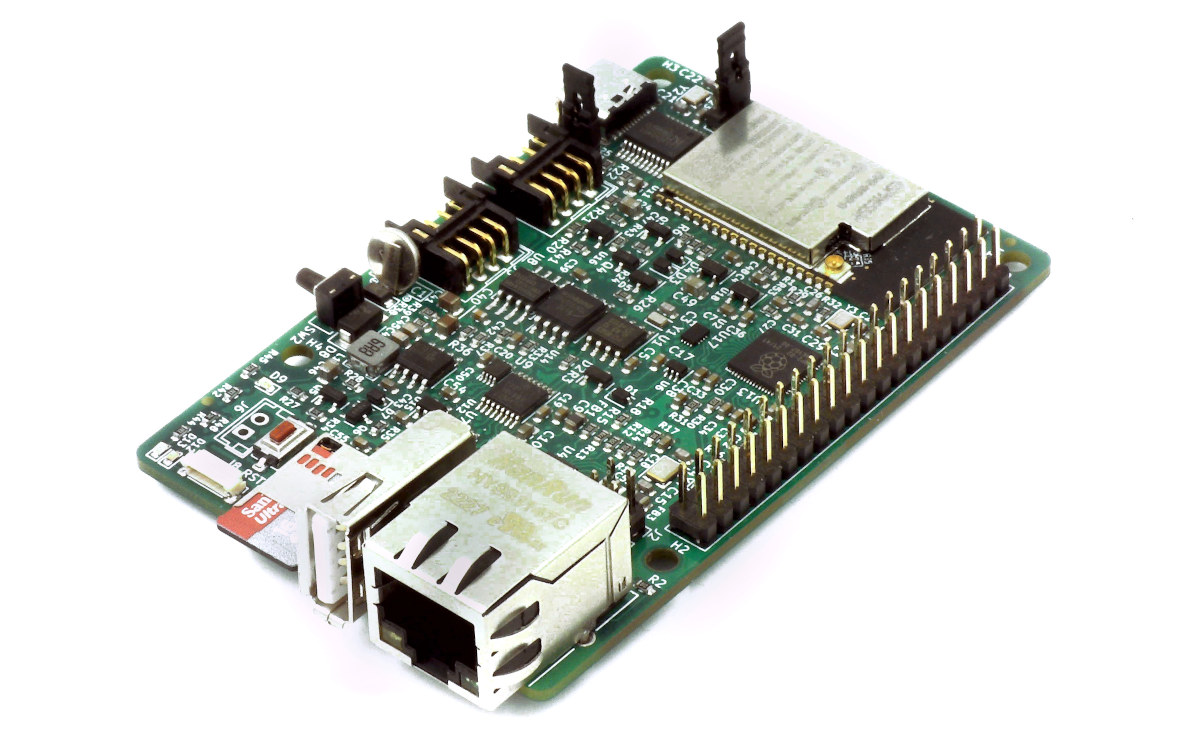James Brown (aka Ancient) has built a tiny computer inside a LEGO brick with a Raspberry Pi RP2040 microcontroller and a 0.42-inch OLED display. And yes, it runs Doom. So finally, the LEGO minifigures have access to a computer suitable for their size :). James did not post a lot of information to reproduce the build by yourself, but he still released the “uGrey” code, written in Micropython, to display greyscale on a monochrome OLED. We can learn from the design in a mesmerizing video (embedded at the end of this post) showing how he made a Raspberry Pi RP2040 computer fit into a LEGO brick. The tiny design is comprised of five main boards/modules: Raspberry Pi RP2040 module The micro USB module Two side modules with other components A 0.42-inch OLED display with 72×40 resolution (SSD1306) Since soldering the four modules together by hand only would be really challenging, […]
Meadow F7v2 Feather STM32F7 MCU board supports .NET, C# programing
Wilderness Labs Meadow F7v2 Feather is an STM32F7 Arm Cortex-M7 development board following the Adafruit Feather form factor and programmable with C# through a lightweight implementation of the .NET framework. We had previously seen the .NET Framework running on Android and Linux thanks to Xamarin’s Mono, but I don’t think I had ever a microcontroller-class board supporting the .NET framework and C# programming. But that’s exactly what the Meadow F7v2 Feather does. Meadow F7v2 Feather specifications: MCU – STMicro STM32F7 Arm Cortex-M7 microcontroller @ 216 MHz with 2D graphics and JPEG accelerators Memory – 32MB RAM Storage – 64MB flash Connectivity – 2.4 GHz WiFi and BLE (ESP32) with onboard and external u.FL antennas USB – 1x Micro USB port for power and programming Expansion with through and castellated holes with up to 25x GPIO, 12x PWM, 6x analog inputs, 2x DAC, I2C, I2S input/output, SPI, UART, CAN Bus Misc […]
Qualcomm QCX216 LTE Cat1 bis IoT-optimized modem integrates WiFi-based terrestrial positioning
Qualcomm QCX216 is a new IoT-optimized LTE Cat1 bis modem with a data rate of up to 10 Mbps at ultra-low power and support for WiFi-based terrestrial positioning thanks to the company’s database of billions of geolocated beacons. LTE Cat1 bis is an update to LTE Cat1 that does not require software and hardware upgrades to the base stations, enables smaller, simpler, and cheaper designs with a single antenna, and delivers higher speeds than LTE Cat M1 typically used in IoT applications. Qualcomm QCX216 LTE IoT modem will be used in smart utility meters, trackers, e-mobility solutions, parking meters, home automation and security equipment, and other location-based solutions. Qualcomm QCX216 specifications: SoC – Qualcomm 216 LTE IoT modem with dual-core Cortex-M3 @ 204 MHz, cellular modem-RF Wireless Cellular Peak Download Speed: 10 Mbps Peak Upload Speed: 5 Mbps Cellular Technology: Rel.14 LTE, Global LTE Cat 1bis Multi SIM: Dual SIM/eSIM […]
ArduCam Mega – A 3MP or 5MP SPI camera for microcontrollers (Crowdfunding)
ArduCam Mega is a 3MP or 5MP camera specifically designed for microcontrollers with an SPI interface, and the SDK currently supports Arduino UNO and Mega2560 boards, ESP32/ESP8266 boards, Raspberry Pi Pico and other boards based on RP2040 MCU, BBC Micro:bit V2, as well as STM32 and MSP430 platform. Both cameras share many of the same specifications including their size, but the 3MP model is a fixed-focus camera, while the 5MP variant supports autofocus. Potential applications include assets monitoring, wildfire monitoring, remote meter reading, TinyML applications, and so on. ArduCam Mega specifications: Camera Type 3MP with fixed focus 5MP with auto-focus from 8cm to infinity Optical size – 1/4-inch Shutter type – Rolling Focal ratio 3MP – F2.8 5MP – F2.0 Still Resolutions 320×240, 640×480, 1280×720 x 1600 x1200x 1920 x 1080 3MP – 2048 x 1536 5MP – 2592×1944 Output formats – RGB, YUV, or JPEG Wake-up time 3MP – […]
Alif Ensemble Cortex-A32 & Cortex-M55 chips feature Ethos-U55 AI accelerator
Alif Semiconductor’s Ensemble is a family of processors and microcontrollers based on Arm Cortex-A32 and/or Cortex-M55 cores, one or two Ethos-U55 AI accelerators, and plenty of I/Os and peripherals. Four versions are available as follows: Alif E1 single-core MCU with one Cortex-M55 core @ 160 MHz, one Ethos U55 microNPU with 128 MAC/c Alif E3 dual-core MCU with one Cortex-M55 core @ 400 MHz, one Cortex-M55 core @ 160 MHz, one Ethos U55 with 256 MAC/c, one Ethos U55 with 128MAC/c Alif E5 triple-core fusion processor with one Cortex-A32 cores @ 800 MHz, one Cortex-M55 core @ 400 MHz, one Cortex-M55 core @ 160 MHz, one Ethos U55 with 256 MAC/c, one Ethos U55 with 128MAC/c Alif E7 quad-core fusion processor with two Cortex-A32 cores @ 800 MHz, one Cortex-M55 core @ 400 MHz, one Cortex-M55 core @ 160 MHz, one Ethos U55 with 256 MAC/c, one Ethos U55 with […]
Add an ePaper display to Raspberry Pi Pico W with EnkPi 2.9-inch to 7.5-inch displays (Crowdfunding)
SB Components is running another crowdfunding campaign with the EnkPi ePaper display powered by a Raspberry Pi Pico W board and offered in four different sizes namely 2.9-inch, 4.2-inch 5.83-inch, and 7.5-inch. Each mainboard also comes with a USB Type-C port, a microSD card socket, an RTC with a backup battery holder, a buzzer, six user buttons, and a JST connector for expansion with GPIO, I2C, UART, and ADC signals. EnkPi specifications: MCU board – Raspberry Pi Pico W with Raspberry Pi RP2040 dual-core Cortex-M0+ microcontroller, 2MB QSPI flash, WiFi 4 module. Storage – MicroSD card socket Display connected over SPI to the Pico W board 2.9-inch tricolor ePaper display with 296×128 resolution 4.2-inch tricolor ePaper display with 400×300 resolution 5.83-inch tricolor ePaper display with 648×480 resolution 7.5-inch tricolor ePaper display with 800×480 resolution Partial refresh support with up to 170 degrees wide viewing angle USB – 1x USB Type-C […]
PineBuds Pro ANC & TWS Bluetooth earbuds with open-source firmware launched for $70
Pine64 has just started taking orders for the PineBuds Pro ANC (Active Noise Cancellation) & TWS (True Wireless Sound) earbuds based on the Bestechnic BES2300-YP dual-core Arm Cortex-M4F Bluetooth audio microcontroller found in the PineSound development board. There are plenty of TWS earbuds on the market, but the PineBuds Pro earbuds are hackable thanks to an open-source firmware that could pave the way to interesting features, and potentially the development of open-source firmware transforming the earbuds into hearing aids. PineBuds Pro specifications: WiSoC – Bestechnic BES 2300YP dual-core Arm Cortex-M4F @ up to 300 MHz with HW DSP instruction, 992KB SRAM, 4MB flash, Bluetooth 5.2 dual mode. Supports hybrid ANC (active noise cancellation) and TWS (true wireless stereo). Wireless Bluetooth 5.2 dual-mode connectivity Bluetooth Profile: A2DP, AVRCP, HFP Audio 3x microphones: FeedForward, FeedBack, Talk with Hybrid Adaptive ANC technology blocking out background noise up to 45dB 6 mm dynamic transducer […]
EsPiFF board combines ESP32 module with RP2040 MCU in the Raspberry Pi 4 form factor (Crowdfunding)
The EsPiFF board may look like a Raspberry Pi 4 Linux SBC but it is equipped with an ESP32-WROVER WiFi and Bluetooth module together with a Raspberry Pi RP2040 microcontroller that acts as a co-processor. The goal here is to provide a Raspberry Pi 4 replacement for applications that require higher reliability and even 24/7 operation without necessarily needing the processing power and multimedia capabilities of the Broadcom BCM2711 Arm processor found in the Pi or the versatility of a Linux operating system. EsPiFF board specifications: Wireless module – ESP32-WROVER module with dual-core ESP32-D0WDQ6 microcontroller with 2.4 GHz WiFi 4 and Bluetooth, 8 MB PSRAM and 16 MB flash Co-processor – Raspberry Pi RP2040 dual-core Cortex-M0+ microcontroller @ up to 133 MHz with 16MB flash used to emulate the Raspberry Pi’s GPIOs on the 40-pin header Additional storage 2 KB of fast FRAM for permanent storage of process data. (faster […]


